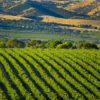
This is an open letter and formal feedback from Wine Australia’s Future Leaders 2023 Cohort to Wine Australia and Australian Grape & Wine regarding the draft of the One Grape & Wine Sector Plan.
The One Grape & Wine Sector Plan (OSP) outlined six broad strategic themes, updated and refocused since Vision 2050 introduced its five pillars for success in 2020.
Acknowledged were the unforeseen changes to our global, national, state and local circumstances that have significantly impacted our industry since then.
How these two documents work in tandem is not clear and the OSP did not offer specific actions or pathways to address these changed circumstances, nor which stakeholders were accountable, nor measurable targets to achieve.
Instead, broad statements, in many cases reinforcing no change of action, ‘continue’, were offered.
We understand it is important to maintain high level thinking to allow innovative, creative and practical ideas to flourish, but we felt underwhelmed.
As a group that benefited immensely from Wine Australia’s excellent Future Leaders Program in 2023, which we are grateful for, we would like to share our Thought Leadership Volume 4, published in November by Pragmatic Thinking.
It contains 15 considered articles that align significantly with the issues raised within the OSP and offers real actions and innovative ideas to address them, all of which would provide pathways towards achieving a sustainable future.
This is no coincidence.
We represent the diversity of stakeholders in our industry across Australia, with many of us experiencing firsthand the challenges resulting from climate change, oversupply and increased costs of living and the impact this is having on us, our people and our communities.
People are the backbone of our industry.
Fundamental to retaining, attracting them, and bridging the generation divide is creating (and normalising) diversity, equity and inclusion.
To be a sector of choice, people need to see themselves within it; feel valued, have financial security, be provided with learning and development opportunities that provide career progression, and have work/life balance within flexible workplaces they want to give their time to.
The health of our industry, especially mental health, is dependent on delivering this.
We are competing against industries that already provide this.
You know this, so how can we do it?
A Sector of Choice outlined steps to engage Millennials and Generation Z (Mil Z) with learning and development pathways to capture early career professionals, embracing new technology R&D to achieve carbon neutrality while creating jobs for the future, aligning with Mil Z’s values.
Both Will Diversity, Equity & Inclusion become the New Greenwashing and Embracing the New Norm of Equity & Equality in the Wine Sector highlight the need for cultural change within our industry now – if we are to be a sector of choice.
Leaders must act, lead with curiosity and break down barriers by inviting and engaging individuals from diverse backgrounds to consider our industry as a profession.
Increasing cultural awareness and engagement with First Nations people through collaboration to nurture pride and understanding in our country’s history of land stewardship will benefit winegrape growers and producers to achieve sustainability goals.
Not to mention showing a pathway by which we create employment opportunities for First Nations people.
Taking this a step further with our own Acknowledgement of Country – by inclusion of First Nations’ geographical indications within existing wine regions – as recommended by Label Evolution in Australia will be a meaningful and symbolic gesture to all Australians, particularly those who have lived here for millennia.
It is the responsibility of all organisations and businesses, large, medium and small, to champion diversity of people, positive work cultures, equality and equity in entitlements and pay with increased transparency, leading the way are the boards that represent us.
“Our consumers, customers and community”. Bookending our industry are winegrape growers and consumers and we are losing both.
Winegrape growers need to know that we have a clear plan and that we care.
The Economic and Human Cost of Inaction in the Face of Structural Oversupply sets out a clear plan that is pragmatic and empathetic tackling the issues of oversupply and mental health together with Government funding.
It begins to address the issues raised in Growers Over a Barrel, which observed that the lack of engagement with this sector by wine producers has resulted in growers feeling disillusioned and leaving the industry.
If environmental, social and governance (ESG) accountability and integrity are at the core of creating a resilient industry, greater inclusion of winegrape growers at the table with increased transparency is essential.
The Australian Grape and Wine Code of Conduct (2021) sets the guidelines.
Mandating all wine producers as signatories to the code of conduct would certainly create change, and they would pay attention.
Mil Z – the generations we desire to engage with thinking outside the bottle… new products and gateway beverages for all occasions.
Make a ‘Grape’ Choice: Give people what they want, Product Delivery Through the Process of Design Thinking: Inside the drinking world of Mil Z and Occasion Thinking: Ensuring Wine Remains Relevant to Today’s Consumer challenge us to think differently about what we make and how we market and sell grape products to consumers.
It’s not about throwing traditional wine in a glass bottle out the window; instead, how do we get ‘buy in’ from Mil Z while creatively using grapes to help alleviate the oversupply.
Give them what they want (alcohol content, flavours, image, packaging) using exceptional design thinking and then market it according to the occasion it suits.
Boldly make it recognisable as coming from us; this is the start of their journey from grape to wine.
Let’s be the tour guide.
Throughout the OSP collaboration and knowledge sharing to enable and empower our sector are frequently mentioned.
We agree!
It underpinned pretty much all the Thought Leadership pieces.
None more so than The Pathway to a Strong Australian Wine Sector: Connect, Collaborate and Co- invest and Sustainability: a mark of trust.
To create a sustainable and resilient sector there needs to be a willingness by organisations and businesses to collaborate.
Both articles provide clear actions that create opportunities for knowledge exchange that would benefit all parties – it should be treated, and respected, as a circular feedback loop, like an ecosystem, not a one-way chain of supply.
We have some tough opponents to our industry who question our social licence to operate.
How we tackle the social and governance of ESG will indicate to our detractors the seriousness with which we take our responsibility to our communities.
Alcohol abuse is a real issue, faced head on in The (Drunk) Elephant in the Room, asking us to be mindful, creating quality wine products that provide choice, encourage connection and suit all occasions.
We are beginning to embrace the NoLo scene, but this is not a solution to the considerable problems faced by our industry.
We must take control of our governance before others do and review alcohol taxation, leading the way with evidence-based arguments for reform that benefits our wider community.
Wine Australia and Australian Grape & Wine got it right with the Future Leaders program coordinated by Pragmatic Thinking.
We need leaders throughout our industry.
We need to nurture and mentor emerging leaders early, before they even know they are one.
The First Crop program is a great example of investing in the people of our future.
An incredibly insightful and sensitive article that adds depth to this is Anatomy of a Resilient Leadership. How it feels to fail: building resilient teams through leading with vulnerability and empowerment, which shows the urgency needed to, and how all businesses can, lead with empathy, empowering and encouraging new leaders.
Plan for Success(ion) provides a clear strategy addressing the issues faced by family run businesses, who make up the majority of our sector, regarding change of leadership and ownership.
It details a staged approach to succession transfer that respects tradition while embracing innovation.
Embrace Change with a Sound Wine Strategy is an excellent case study of a small family business, demonstrating good leadership through adopting a ‘possibility mindset’.
We need to encourage leaders to be adaptable, curious, vulnerable and always on the lookout for the next generation of leaders, whoever they are.
You can’t be what you can’t see.
Leadership from our industry requires robust conversations regarding levy reform so we can fund the organisations that support us especially if we are to work towards premiumisation of our industry.
For cross sector collaboration we need someone to extend the hand first.
Our governing bodies, who contain much of the data and knowledge that will help businesses and regions understand what is required to continually improve to meet ESG goals, should lead the way.
Those in retail can help get our messaging out about sustainability because we need to get the attention of Mil Z and demonstrate to existing wine consumers our integrity.
If Wine Australia and Australian Grape & Wine are overseeing the One Grape & Wine Sector Plan for the first three years, we encourage you to develop an implementation action plan outlining lead agents, timelines and high level, quantifiable, accountable targets for the short (2027-2030), medium and long terms, which are lacking in the OSP.
If we don’t currently have data that adds value to understanding our sector, customers and consumers then we need to fill this gap.
While consultation within our industry was undertaken to inform the OSP it needs to now be broader, engaging critical stakeholders, including retailers and suppliers, as well as understanding our domestic and international consumers.
It is encouraging to read there will be annual reviews.
We hope this extends to an action plan with governance measures that regularly reviews progress against targets.
Having the capacity to adapt and change the action plan in accordance with changing market conditions can only benefit our sector, building agility, flexibility and resilience.
To quote Vision 2050: “To avoid the mistakes of the past, our strategies must not make the same mistakes of oversupply, by pursuing volume over quality, and short-term growth strategies. We must also ensure our strategies build resilience to enable grape and wine businesses to withstand external market shocks including currency fluctuations and global trade tensions.”
Throw 15 strangers together, taking them through a well curated leadership program that exposes their vulnerabilities and provides skills to overcome them creating connections that will last a lifetime, and what do you get – Thought Leadership Volumes 1, 2, 3 and 4.
We look forward to seeing the final presentation of the One Grape & Wine Sector Plan that has listened to all the feedback provided since its release.
– Wine Australia’s Future Leaders 2023 Cohort













Recent Comments